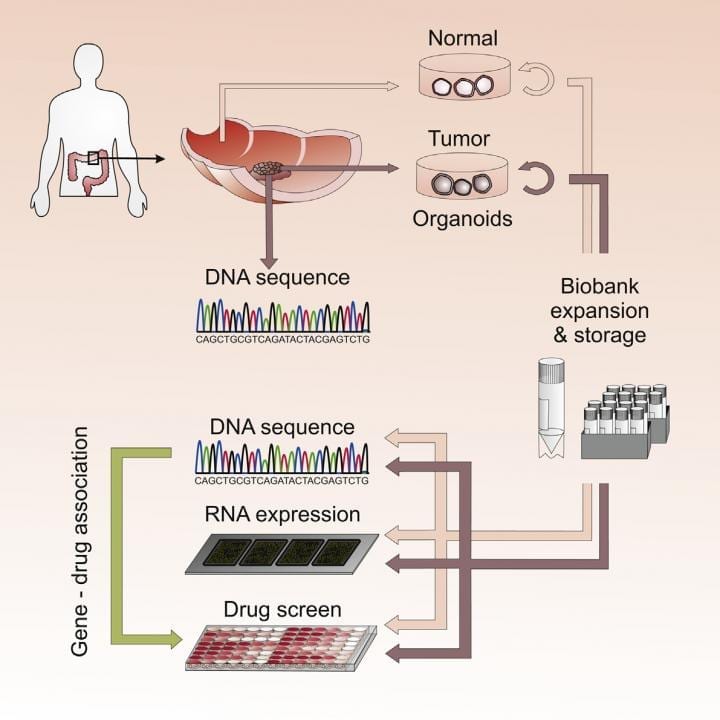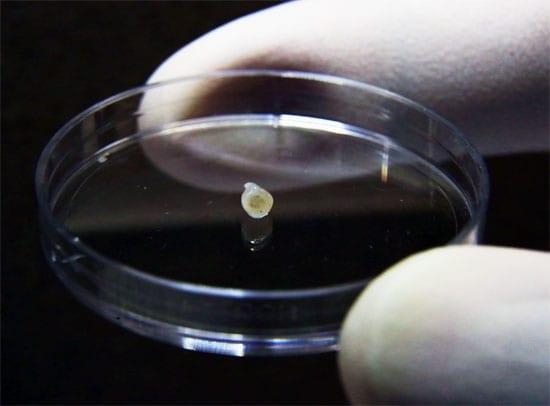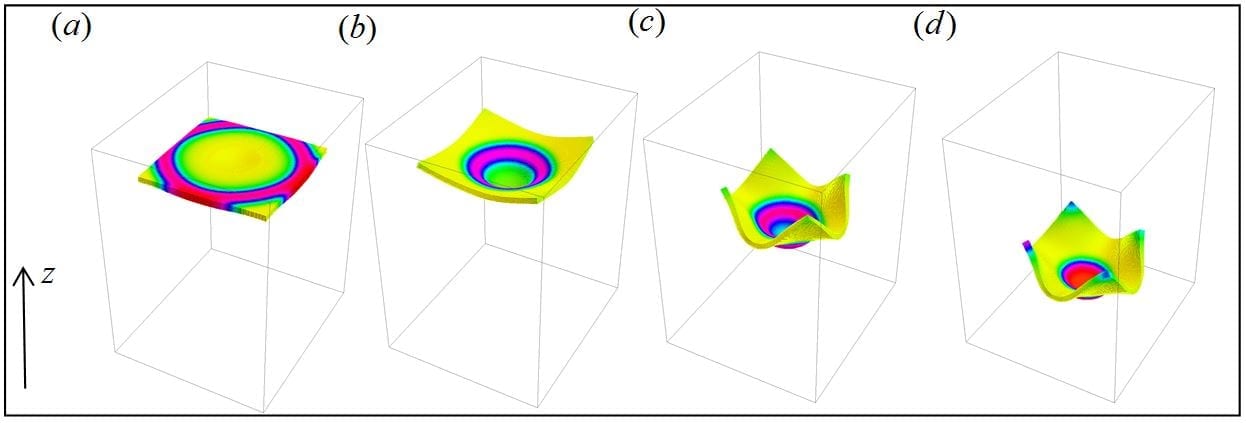
CREDIT
van de Wetering et al./Cell 2015
Three-dimensional cultures (or “organoids”) derived from the tumors of cancer patients closely replicate key properties of the original tumors, reveals a study published May 7 in Cell. These “organoid” cultures are amenable to large-scale drug screens for the detection of genetic changes associated with drug sensitivity and pave the way for personalized treatment approaches that could optimize clinical outcomes in cancer patients.
“This is the first time that a collection of cancer organoids, or a living biobank, has been derived from patient tumors,” says senior study author Mathew Garnett, a geneticist at the Wellcome Trust Sanger Institute. “We believe that these organoids are an important new tool in the arsenal of cancer biologists and may ultimately improve our ability to develop more effective cancer treatments.”
To study the causes of cancer and develop new cancer treatments, many laboratories use experimental model systems such as cells grown from patient tumors. However, currently available cell lines have been derived under suboptimal conditions and therefore fail to reflect important features of tumor cells. As a result, it has been challenging to predict the drug sensitivity of individual patients based on their unique spectrum of genetic mutations.
In recent years, scientists have developed organoid cell culture systems as an alternative approach to grow normal and diseased tissue in a dish. In contrast to cell lines, organoids display the hallmarks of the original tissue in terms of its 3D architecture, the cell types present, and their self-renewal properties. Given the advantages of organoids, Garnett and Hans Clevers of the Hubrecht Institute set out to test whether these cultures could potentially bridge the gap between cancer genetics and patient outcomes.
In the new study, the researchers grew 22 organoids derived from tumor tissue from 20 patients with colorectal cancer and then sequenced genomic DNA isolated from these cultures. The genetic mutations in the organoid cultures closely matched those in the corresponding tumor biopsies and agreed well with previous large-scale analyses of colorectal cancer mutations. These findings confirm that the cultures faithfully capture the genomic features of the tumors from which they are derived as well as much of the genomic diversity associated with colorectal cancer.
To link drug sensitivity to genetic changes, the researchers next screened the responses of the organoids to 83 experimental and approved cancer drugs. Given their diverse genetic profiles, the organoids displayed a range of sensitivities to the drugs. In validation of the approach, the researchers identified previously reported associations between specific mutations and resistance to particular drugs. The organoids also revealed a novel gene-drug association, indicating that the subset of cancer patients with RNF43 mutations would strongly benefit from a drug that inhibits a protein called porcupine. “At some point in the future, this approach may be suitable for modeling individual patient response to cancer therapies to inform clinical treatment,” Garnett says.
Read more: 3-D ‘organoids’ grown from patient tumors could personalize drug screening
The Latest on: Organoids
[google_news title=”” keyword=”Organoids” num_posts=”10″ blurb_length=”0″ show_thumb=”left”]
via Google News
The Latest on: Organoids
- Texas Children’s Hospital and Baylor College of Medicine send human brain organoids to the International Space Stationon May 6, 2024 at 4:59 pm
After spending a month in space, the brain organoids returned to the lab yesterday in good condition. The launch offered Dr. Maletic-Savatic and her team at the Duncan NRI an unprecedented opportunity ...
- Human Organoids Market CAGR of 17.5%, Big Money to be Made as Market Size Continues to Surgeon May 5, 2024 at 3:05 pm
Human Organoids Market is valued approximately at USD 723.40 million in 2019 and is anticipated to grow with a healthy growth rate of more than 17.5% over the forecast period 2020-2027. Organoids are ...
- Fetal Organoids Generated From Human Amniotic Fluidon May 2, 2024 at 5:00 pm
Over the last decade, organoids have become an increasingly popular platform for modeling organ function and disease. 3 However, the generation of fetal organoids is complicated by ethical and legal ...
- Scientists develop new organoid model to study thymus functionon April 29, 2024 at 8:08 am
Researchers from the Organoid group have developed a new organoid model that can be used to study the thymus. The organoids are derived from mouse thymus tissue, specifically model thymic epithelial ...
- Lab-made miniorgans take scientists a step closer to curing canceron April 25, 2024 at 8:34 am
In the fight to cure cancer, scientists need better models. And they might just get them — human-derived organoids — thanks to light.
- Brain organoids target rare neurological disorderon April 24, 2024 at 8:00 am
Scientists have devised a potential therapy for a rare neurological disease using brain tissue derived from human stem cells, raising hopes that so-called organoid technology can target other ...
- Mini-colon and brain ‘organoids’ shed light on cancer and other diseaseson April 23, 2024 at 5:00 pm
When the researchers injected the cancerous cells into mice, the tumours looked similar to those seen in human colorectal cancer. The organoids accumulated fewer tumours when the researchers ...
- Human Lung Organoids Mimic Animal Response to Nanomaterialson April 17, 2024 at 5:00 pm
Though not expected to replace animal models completely, human organoids could soon lead to significant reductions in research animal numbers, the team led by cell biologist and nanotoxicologist Dr ...
- Human Organoids Market Projected to Reach $2,124.91 million by 2030 - Exclusive Report by 360iResearchon April 11, 2024 at 5:00 pm
PUNE, India, April 11, 2024 /PRNewswire/ -- The report titled "Human Organoids Market by Product (Colorectal, Heart, Kidney), Usability (Customizable Products, Ready to Use Products), Application ...
- Exploring ethical and legal ramifications of growing brain organoids from human fetal brain tissueon April 9, 2024 at 6:51 am
Brain organoids, though often referred to as "mini brains," are not truly human brains. But the concerns over these lab-grown brain tissues, especially when they are developed from human fetal ...
via Bing News










